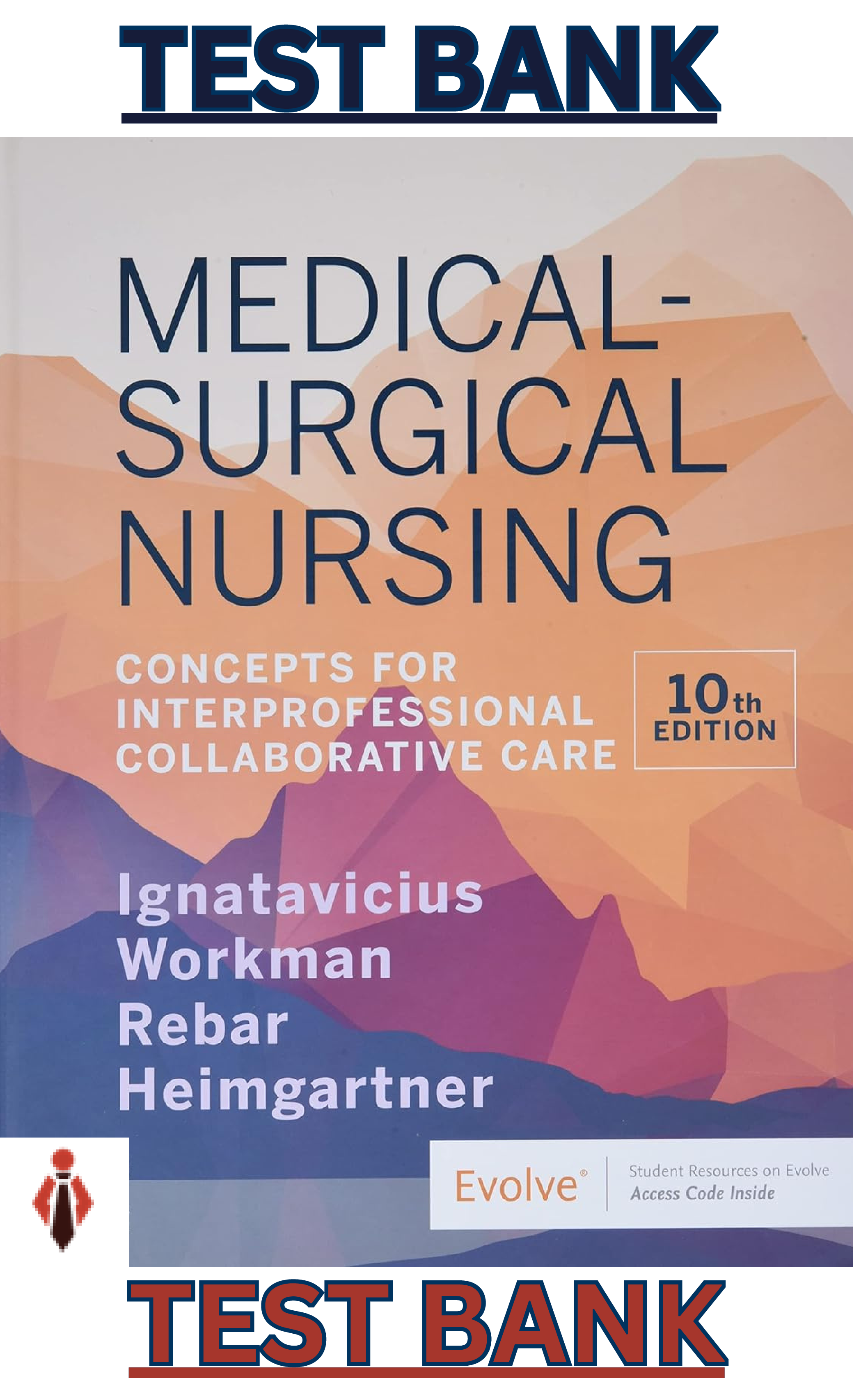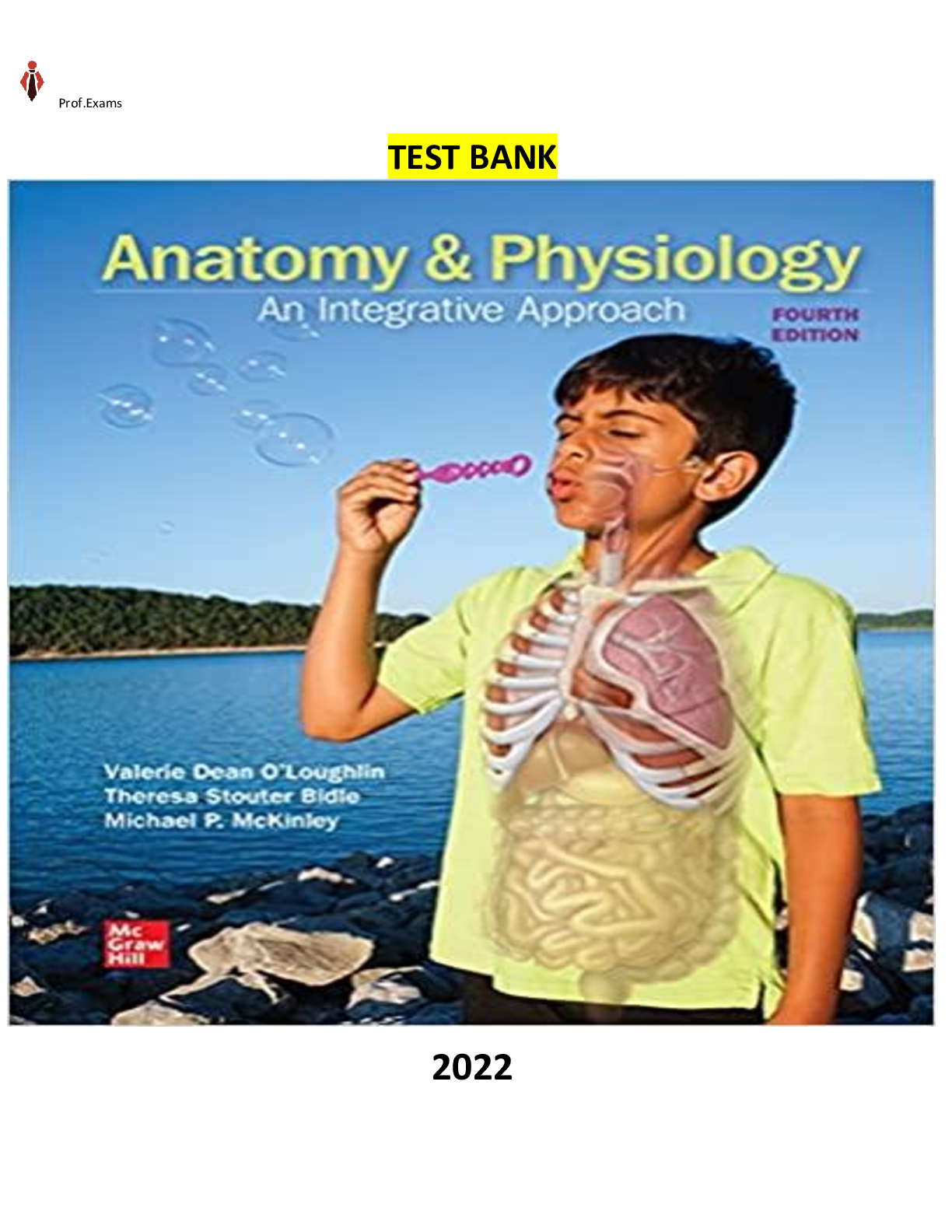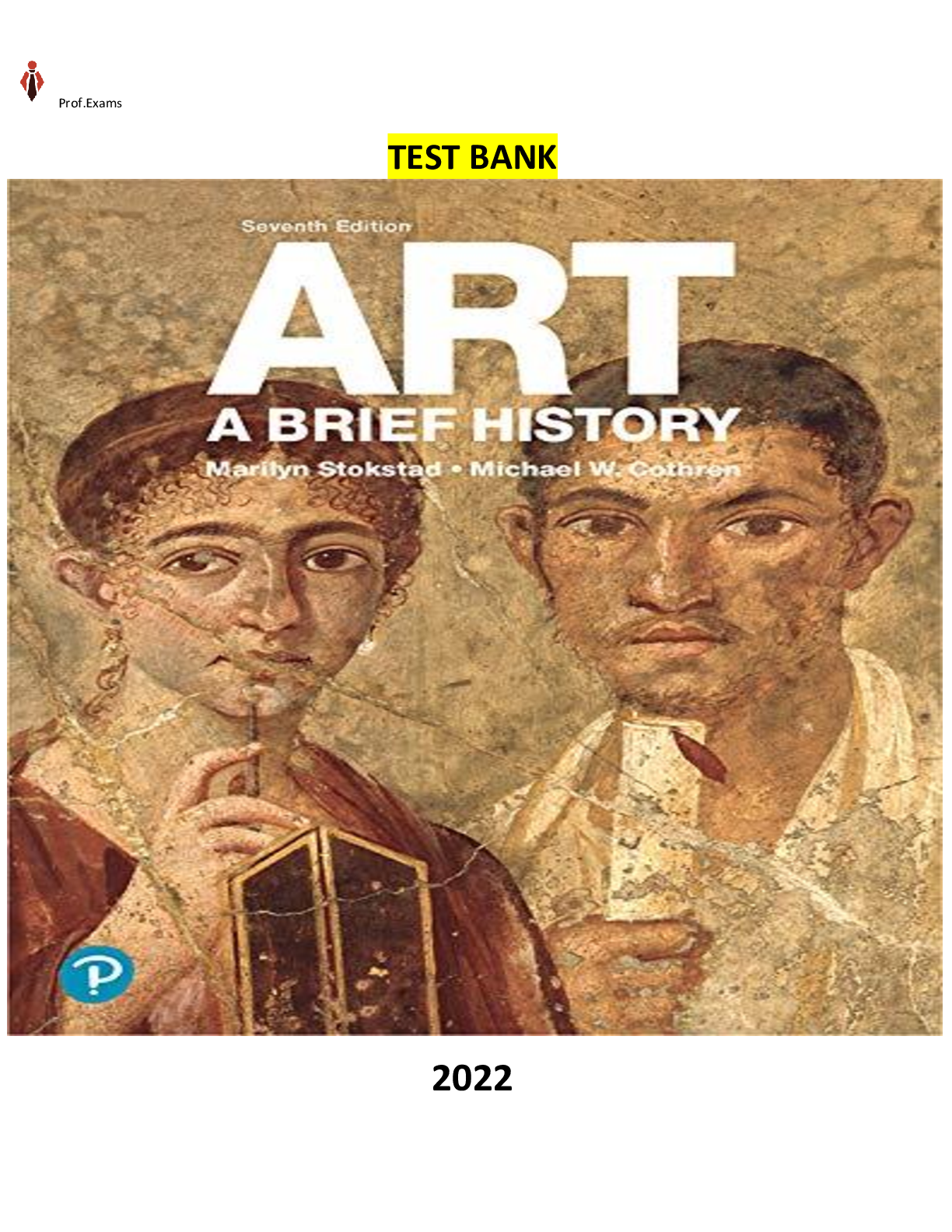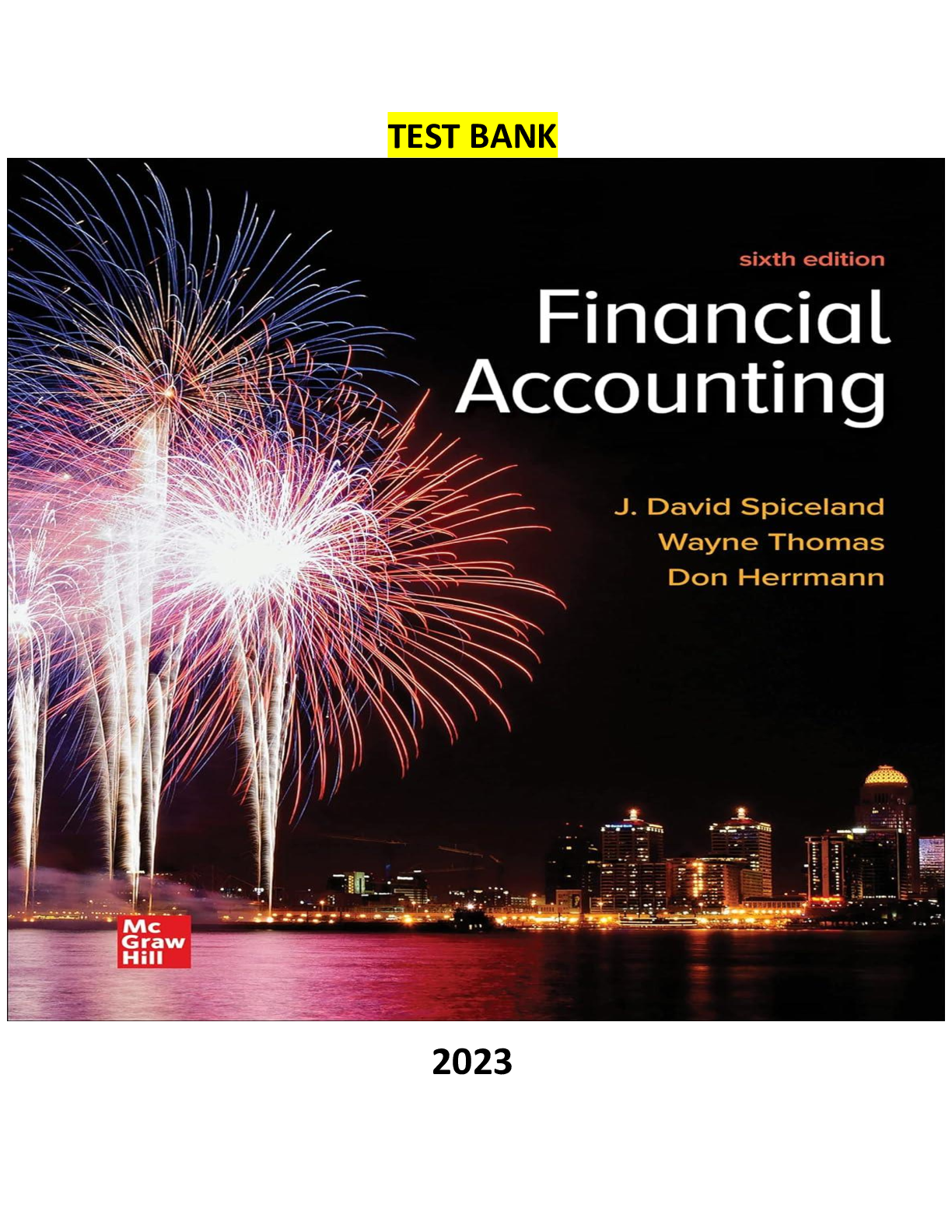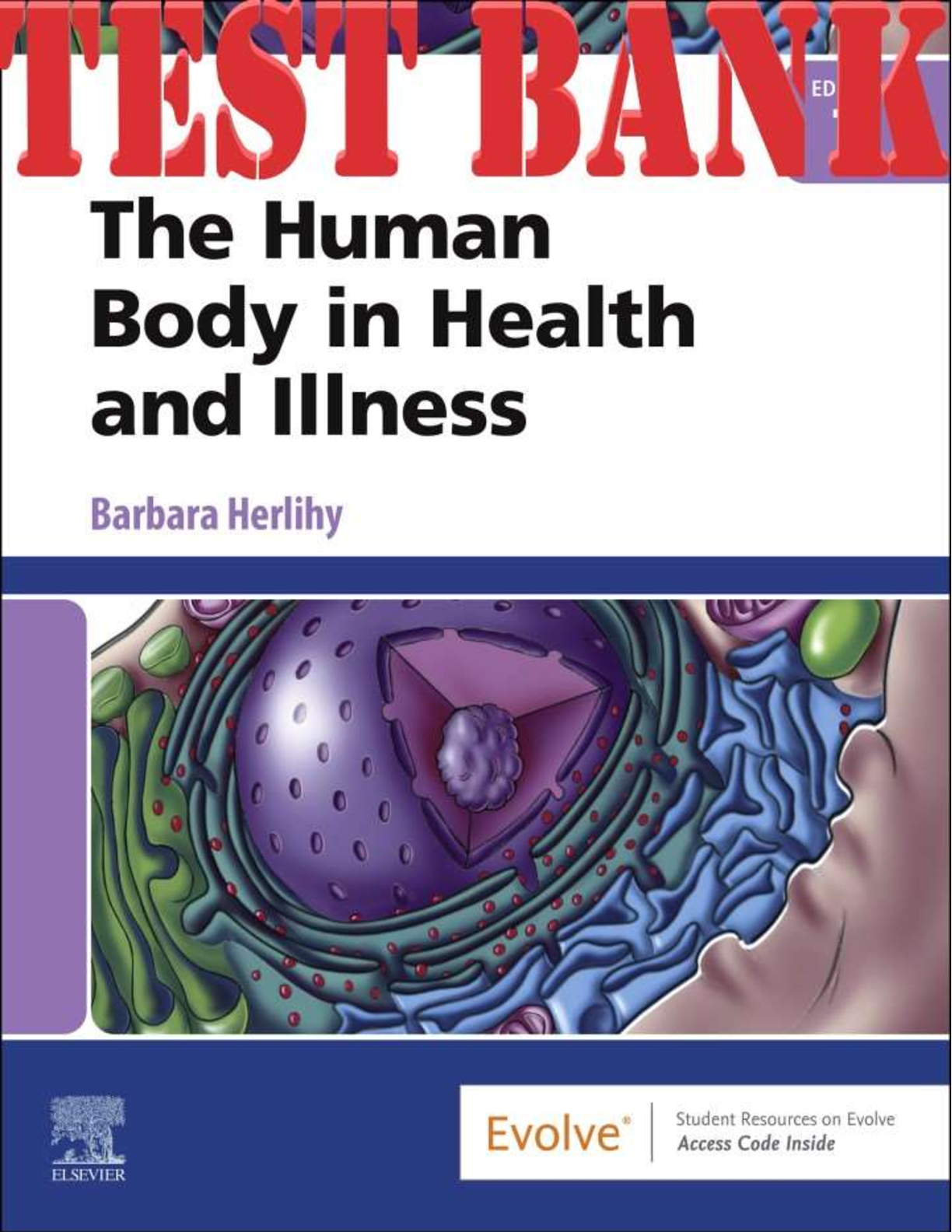Art > TEST BANKS > Art: A Brief History Revel 7th Edition by Marilyn Stokstad & Michael Cothren. ALL Chapters 1-20 TES (All)
Art: A Brief History Revel 7th Edition by Marilyn Stokstad & Michael Cothren. ALL Chapters 1-20 TEST BANK
Document Content and Description Below
COMPLETE - Elaborated Test Bank for Art-A Brief History Revel 7Ed.by Marilyn Stokstad & Michael Cothren. ALL Chapters Included 1-20. 631 Pages of Content- A+ Graded for 2023 COMPLETE - Elaborated... Test Bank for Art-A Brief History Revel 7Ed.by Marilyn Stokstad & Michael Cothren. ALL Chapters Included 1-20. 631 Pages of Content- A+ Graded for 2023 TABLE OF CONTENTS TABLE OF CONTENTS 1. Prehistoric Art in Europe 2. Art of the Ancient Near East 3. Art of Ancient Egypt 4. Early Asian Art 5. Art of Ancient Greece and the Aegean World 6. Etruscan and Roman Art 7. Jewish, Early Christian, and Byzantine Art 8. Islamic Art 9. Later Asian Art 10. Early Medieval and Romanesque Art 11. Gothic Art 12. Early Renaissance Art 13. Art of the High Renaissance and Reformation 14. Seventeenth-Century Art in Europe 15. Art of the Americas 16. Arts of Africa 17. European and American Art, 1715-1840 18. European and American Art, 1840-1910 19. Modern Art in Europe and the Americas, 1900-1945 20. Art Since 1945 1 Prehistoric Art in Europe Learning Objectives 1.1 The Upper Paleolithic Period (c. 42,000–8000 bce) 1.1.1 Artifacts or Works of Art? 1.1.2 Shelter or Architecture? 1.2 Cave Painting and Sculpture 1.2.1 The Meaning(s) of Prehistoric Cave Paintings 1.2.2 Lascaux and Altamira 1.3 The Neolithic Period (c. 6500–3400/2300 bce) 1.3.1 Çatalhöyük 1.3.2 Ceramics 1.4 Megalithic Monuments 1.4.1 Stonehenge Looking Back Think About It Crosscurrents In Perspective 2 Art of the Ancient Near East Learning Objectives 2.1 Sumer 2.1.1 Royal Tombs of Ur 2.2 Akkad, Ur, Lagash, and Babylon 2.2.1 Lagash and Babylon 2.3 Assyrians and Neo-Babylonians 2.3.1 Neo-Babylonians 2.4 Persia Looking Back Think About It Crosscurrents In Perspective 3 Art of Ancient Egypt Learning Objectives 3.1 Early Dynastic and Old Kingdom Egypt (c. 2950–2150 bce) 3.1.1 Tombs 3.1.2 Sculpture 3.1.3 Painted Relief 3.2 Middle Kingdom (c. 1975–1640 bce) 3.3 New Kingdom (c. 1539–1075 bce) 3.3.1 The Temple Complex 3.3.2 Tombs of the Elite 3.3.3 The Amarna Style 3.3.4 Traditions Reasserted 3.4 Late Egyptian Art Looking Back Think About It Crosscurrents In Perspective 4 Early Asian Art Learning Objectives 4.1 The Indian Subcontinent and Southeast Asia 4.1.1 The Indus Civilization 4.1.2 The Vedic Period 4.1.3 The Rise of Buddhism The Great Stupa at Sanchi 4.1.4 Gandhara and Mathura Styles 4.1.5 Gupta Period 4.1.6 Southeast Asia 4.2 China and Korea 4.2.1 The Bronze Age 4.2.2 Qin and Han Empires 4.2.3 Northern and Southern Dynasties Calligraphy 4.2.4 Tang Dynasty 4.2.5 Korea 4.3 Japan 4.3.1 The Kofun Period 4.3.2 The Asuka Period Looking Back Think About It Crosscurrents In Perspective 5 Art of Ancient Greece and The Aegean World Learning Objectives 5.1 The Bronze Age in the Aegean 5.1.1 The Cycladic Islands 5.1.2 Minoan Crete 5.1.3 The Mycenaeans 5.2 the emergence of greek civilization 5.2.1 The Geometric Style 5.2.2 The Archaic Period Aegina Kouros and Kore Ceramic Painting 5.3 The Classical Period 5.3.1 The Early Classical Period (c. 480–450 bce) 5.3.2 The “High” Classical Period (c. 450–400 bce) The Akropolis Stele Sculpture The Canon of Polykleitos 5.3.3 The Late Classical Period (400–323 bce) Praxiteles and Lysippos Mosaics Greek Theaters 5.4 Hellenistic Art 5.4.1 Pergamon Looking Back Think About it Crosscurrents In Perspective 6 Etruscan and Roman Art Learning Objectives 6.1 The Etruscans 6.2 The Romans: From Republic to Empire 6.2.1 The Republican Period Portraiture Architecture 6.2.2 The Age of Augustus 6.2.3 The Roman House Wall Painting 6.3 Imperial Rome 6.3.1 Imperial Architecture Trajan’s Forum and Market The Pantheon 6.3.2 Imperial Portraits 6.4 The Late Empire 6.4.1 Constantine the Great Looking Back Think About It Crosscurrents In Perspective 7 Jewish, Early Christian, and Byzantine Art Learning Objectives 7.1 Early Jewish Art 7.2 Early Christian Art 7.2.1 Dura-Europos 7.2.2 Sculpture 7.2.3 Old St. Peter’s and Sta. Sabina 7.2.4 Ravenna 7.2.5 Sarcophagus of Junius Bassus 7.3 Early Byzantine Art 7.3.1 The Golden Age of Justinian San Vitale in Ravenna 7.3.2 Illuminated Manuscripts 7.3.3 Icons and Iconoclasm 7.4 Middle and Late Byzantine Art 7.4.1 Middle Byzantine Art (843–1204) 7.4.2 Late Byzantine Art (1261–1453) Looking Back Think About It Crosscurrents In Perspective 8 Islamic Art Learning Objectives 8.1 Early Islamic Art 8.1.1 The Great Mosques of Damascus and Córdoba 8.1.2 Calligraphy 8.2 Later Islamic Art in Persia, Spain, and Turkey 8.2.1 The Saljuqs in Persia 8.2.2 The Nasrids in Spain 8.2.3 The Ottomans in Turkey 8.3 Luxury Arts 8.3.1 Sumptuous Books 8.4 Modern Islam Looking Back Think About It Crosscurrents In Perspective 9 Later Asian Art Learning Objectives 9.1 India and Southeast Asia 9.1.1 The Mughal Empire 9.1.2 Rajput Patronage 9.1.3 Cambodia 9.2 China and Korea 9.2.1 Song Dynasty 9.2.2 Yuan Dynasty 9.2.3 Ming Dynasty 9.2.4 Korea 9.3 Japan 9.3.1 Heian Period 9.3.2 Kamakura and Muromachi Periods 9.3.3 Momoyama Period 9.3.4 Ukiyo-e: Pictures of the Floating World Looking Back Think About It Crosscurrents In Perspective 10 Early medieval and romanesque art Learning Objectives 10.1 The British Isles and Scandinavia 10.1.1 Scandinavia 10.2 The Carolingian Revival 10.2.1 Book Arts 10.3 The Tenth-Century Art of Spain and the Ottonian Empire 10.3.1 The Ottonian Empire Book Painting 10.4 Romanesque Art 10.4.1 Architecture 10.4.2 Architectural Sculpture 10.4.3 Wall Paintings, Textiles, and Wood Carving 10.4.4 Book Painting Looking Back Think About it Crosscurrents In Perspective 11 Gothic Art Learning Objectives 11.1 The Origins of Gothic at Saint-Denis 11.1.1 Stained Glass 11.2 Gothic Art in France 11.2.1 Chartres 11.2.2 Paris and Reims 11.2.3 Art in the Age of St. Louis 11.2.4 Fourteenth-Century Manuscripts and Metalwork 11.3 Gothic Art in England and Germanic Lands 11.3.1 English Manuscripts and Textiles 11.3.2 Germanic Lands 11.4 Late Medieval Art in Italy 11.4.1 Sculpture 11.4.2 Painting in Siena 11.4.3 Painting in Florence 11.4.4 Comparing Duccio and Giotto Looking Back Think About it Crosscurrents In Perspective 12 Early Renaissance Art Learning Objectives 12.1 Northern Renaissance Art 12.1.1 The Limbourg Brothers 12.1.2 Painting in Flanders Workshop of the Master of Flémalle Jan van Eyck and Rogier van der Weyden Second-Generation Painters: Petrus Christus and Hugo van der Goes 12.1.3 Tapestries 12.2 The Graphic Arts 12.3 Italian Renaissance Art in Florence 12.3.1 The Competition Reliefs 12.3.2 Architecture 12.3.3 Sculpture 12.3.4 Painting Fra Angelico, Uccello, and Botticelli 12.4 Urbino, Mantua, Venice, and Rome 12.4.1 Urbino 12.4.2 Mantua 12.4.3 Venice and Rome Looking Back Think about it Crosscurrents In Perspective 13 Art of the High Renaissance and Reformation Learning Objectives 13.1 Italian Art of the High Renaissance 13.1.1 Leonardo da Vinci 13.1.2 Raphael 13.1.3 Michelangelo The Sistine Chapel Building St. Peter’s 13.1.4 Properzia de’ Rossi 13.1.5 Venice and the Veneto Giorgione Titian Veronese and Tintoretto Palladio 13.2 Mannerism 13.2.1 Italy 13.2.2 France 13.3 German Art 13.3.1 Grünewald 13.3.2 Dürer 13.3.3 The Reformation and the Arts 13.3.4 Holbein 13.4 Netherlandish and Spanish Art Looking Back Think about it Crosscurrents In Perspective 14 Seventeenth-Century Art in Europe Learning Objectives 14.1 Rome 14.1.1 Bernini 14.1.2 Borromini 14.1.3 Baroque Ceilings 14.1.4 Caravaggio 14.2 Spain 14.2.1 Velázquez 14.2.2 Zurbarán and Murillo 14.3 Flanders 14.3.1 Rubens 14.3.2 Van Dyck 14.4 The Dutch Republic 14.4.1 Hals and Leyster 14.4.2 Rembrandt 14.4.3 Interiors, Landscapes, and Flowers 14.5 France 14.5.1 Versailles 14.5.2 Poussin Looking Back Think about it Crosscurrents In Perspective 15 Art of the Americas Learning Objectives 15.1 Mesoamerica 15.1.1 The Olmecs 15.1.2 Teotihuacan 15.1.3 The Maya 15.1.4 The Aztecs 15.2 South America: The Central Andes 15.2.1 The Moche Culture 15.2.2 The Inca Empire 15.3 The Aftermath of the Spanish Conquest 15.4 North America 15.4.1 Early Cultures of the East 15.4.2 The Southwest 15.4.3 The Eastern Woodlands and the Great Plains 15.4.4 The Northwest Coast Looking Back Think about it Crosscurrents In Perspective 16 Arts of Africa Learning Objectives 16.1 Thinking about Style: Abstraction and Naturalism 16.1.1 Nigeria 16.2 Themes in African Art: Spirituality, Power and Identity 16.2.1 South Africa Prehistoric Art 16.2.2 Zimbabwe Great Zimbabwe 16.2.3 Tunisia Islamic Architecture 16.2.4 Ethiopia Living Rock Churches 16.2.5 Burkina Faso Plank Masks: Spirituality and Identity 16.3 Focus on Objects: Participation and Contemporaneity 16.3.1 Ghana The Asante Empire 16.3.2 Mali Great Mosque of Djenné 16.3.3 Republic of the Congo, Democratic Republic of the Congo, and Angola The Kongo Kingdom 16.4 Art in Context: The Burden of Colonialism 16.4.1 Nigeria Benin City The British Punitive Expedition of 1897 16.4.2 Cameroon Bamum Kingdom 16.4.3 Gabon The Byeri Reliquary 16.5 Late Twentieth and Early Twenty-First Century: New Directions 16.5.1 Aimé Mpane 16.5.2 Seydou Keïta: Photography 16.5.3 El Anatsui: Récupération 16.5.4 Zanele Muholi: Changing the Political and Cultural Discourse 16.5.5 Art Beyond the Continent Looking Back Think about it Crosscurrents In Perspective 17 European and American Art, 1715–1840 Learning Objectives 17.1 Rococo 17.2 Moralizing Narratives and Portraits 17.2.1 Portraiture 17.3 Neoclassicism and Romanticism 17.3.1 Neoclassical Painting in France 17.3.2 Neoclassical Architecture in England and the United States 17.3.3 Romantic Painting and Printmaking in France and Spain Goya 17.3.4 The Art of the Americas under Spain 17.4 Romantic Landscape Painting Looking Back Think About It Crosscurrents In Perspective 18 European and American Art, 1840–1910 Learning Objectives 18.1 Architecture 18.2 Academic and Anti-Academic Art 18.2.1 Reactions against the Academy Art Nouveau. 18.3 Early Photography 18.4 Realism 18.4.1 Early French Realist Painters 18.4.2 Manet: “The Painter of Modern Life” 18.4.3 A Continuing American Tradition 18.5 Impressionism 18.5.1 Morisot, Degas, and Cassatt 18.6 Post-Impressionism 18.6.1 Munch and Toulouse-Lautrec 18.6.2 Cézanne 18.6.3 Sculpture Looking Back Think About It Crosscurrents In Perspective 19 Modern Art in Europe and The Americas, 1900–1945 Learning Objectives 19.1 Early Modernism in Europe 19.1.1 Les Fauves 19.1.2 Expressionism The Blue Rider 19.1.3 Cubism 19.1.4 Responses to Cubism France Italy Russia 19.1.5 Dada 19.2 Modern Art Comes to the United States 19.3 European Art Between the Wars 19.3.1 Constructivism 19.3.2 De Stijl 19.3.3 Architectural Purism 19.3.4 The Bauhaus 19.3.5 The Suppression of the Avant-Garde in Germany 19.3.6 Surrealism 19.3.7 Picasso’s Guernica 19.3.8 Sculpture 19.4 American Art Between the Wars 19.4.1 The United States The Harlem Renaissance 19.4.2 Mexico and Canada 19.4.3 Architecture Looking Back Think About It Crosscurrents In Perspective 20 Art Since 1945 Learning Objectives 20.1 Abstract Expressionism 20.1.1 Action Painting 20.1.2 Color Field Painting 20.1.3 Sculpture 20.2 The Expanding Art World 20.2.1 Johns, Rauschenberg, and Cage 20.2.2 Gutai 20.2.3 Environments, Happenings, and Fluxus 20.2.4 Pop Art 20.2.5 Minimalism 20.2.6 The Dematerialization of Art 20.2.7 Earthworks 20.2.8 Feminist Art 20.3 Postmodernism 20.3.1 Neo-Expressionism 20.3.2 Appropriation, Identity, and Critique 20.3.3 Identity Politics and the Culture Wars 20.3.4 Controversies Over Art 20.3.5 The Impact of AIDS 20.4 Contemporary Art in an Expanding World 20.4.1 The New Formalism 20.4.2 Activist Strategies 20.4.3 New Media 20.5 Postwar Architecture 20.5.1 Postmodern Architecture 20.5.2 Deconstructivism Architecture 20.5.3 The Site of the World Trade Cent 1. Which of the following is incorporated into the composition of Spotted Horses and Human Hands? a. the natural environment of the horses b. the illusion of three-dimensional space c. the depiction of abstract human bodies d. the natural contour of the cave wall Answer: d Learning Objective: None Topic: Introduction Difficulty Level: Moderate Skill Level: Understand the Concepts 2. A statue carved free of any background or block is called a __________. a. sculpture in the round b. capstone c. linear design d. dolmen Answer: a Learning Objective: 1.1 Discuss whether the earliest representational images and shelters of the Paleolithic period can be considered works of art and architecture. Topic: Artifacts or Works of Art? Difficulty Level: Easy Skill Level: Remember the Facts 3. Which of the following distinguishes Lion-Human Statuette from other Paleolithic figurines? a. its large size b. its medium c. its style d. its technique Answer: a Learning Objective: 1.1 Discuss whether the earliest representational images and shelters of the Paleolithic period can be considered works of art and architecture. Topic: Artifacts or Works of Art? Difficulty Level: Moderate Skill Level: Understand the Concepts 2 Copyright © 2020, 2016, 2012 Pearson Education, Inc. All rights reserved. 4. Although archeologists and art historians are unsure of the meaning of Lion-Human Statuette, it is considered an artwork because it __________. a. demonstrates the technique of modeling clay into representational figures b. establishes that Paleolithic artists copied what they observed in nature c. represents a spiritual figure communing with the celestial world d. demonstrates complex thinking and creative imagination Answer: d Learning Objective: 1.1 Discuss whether the earliest representational images and shelters of the Paleolithic period can be considered works of art and architecture. Topic: Artifacts or Works of Art? Difficulty Level: Difficult Skill Level: Apply What You Know and Analyze It 5. Most carved human figures from the Paleolithic period depict __________. a. men b. children c. women d. elders Answer: c Learning Objective: 1.1 Discuss whether the earliest representational images and shelters of the Paleolithic period can be considered works of art and architecture. Topic: Artifacts or Works of Art? Difficulty Level: Easy Skill Level: Remember the Facts 6. Female figurines from the Paleolithic period most likely exaggerated female attributes to emphasize __________. a. beauty b. power c. fertility d. religious ritual Answer: c Learning Objective: 1.1 Discuss whether the earliest representational images and shelters of the Paleolithic period can be considered works of art and architecture. Topic: Artifacts or Works of Art? Difficulty Level: Moderate Skill Level: Understand the Concepts 3 Copyright © 2020, 2016, 2012 Pearson Education, Inc. All rights reserved. 7. In Russia and Ukraine, the buildings of Upper Paleolithic settlements were built using __________. a. mammoth bones b. the post-and-lintel system c. stone dolmens d. corbel vaults Answer: a Learning Objective: 1.1 Discuss whether the earliest representational images and shelters of the Paleolithic period can be considered works of art and architecture. Topic: Shelter of Architecture? Difficulty Level: Easy Skill Level: Remember the Facts 8. The earliest-known prehistoric cave paintings are located at __________. a. Lascaux b. Altamira c. Chauvet d. Çatalhöyük Answer: c Learning Objective: 1.2 Summarize the diverse forms and potential meanings of Paleolithic cave paintings and sculptures. Topic: Cave Painting and Sculpture Difficulty Level: Easy Skill Level: Remember the Facts 9. Why do scholars agree that cave paintings were meaningful to prehistoric peoples? a. The cave openings were sealed before the artists moved to a new location. b. Archaeologists found hunting equipment in the subterranean galleries of each cave. c. The archaeological record indicates that people were buried underneath the paintings. d. People returned to them many times generation after generation. Answer: d Learning Objective: 1.2 Summarize the diverse forms and potential meanings of Paleolithic cave paintings and sculptures. Topic: The Meaning(s) of Prehistoric Cave Paintings Difficulty Level: Difficult Skill Level: Apply What You Know and Analyze It 4 Copyright © 2020, 2016, 2012 Pearson Education, Inc. All rights reserved. 10. Which of the following types of evidence might suggest that the subterranean galleries of prehistoric caves had religious or magical functions? a. elaborate burials b. stones engraved with linear designs c. artifacts and footprints d. ceramic figurines Answer: c Learning Objective: 1.2 Summarize the diverse forms and potential meanings of Paleolithic cave paintings and sculptures. Topic: The Meaning(s) of Prehistoric Cave Paintings Difficulty Level: Moderate Skill Level: Understand the Concepts 11. Which of the following examples of Paleolithic art is unique because it may tell a story? a. Men Taunting a Deer (?) b. Hall of Bulls c. Woman from Willendorf d. Bird-Headed Man with Bison Answer: d Learning Objective: 1.2 Summarize the diverse forms and potential meanings of Paleolithic cave paintings and sculptures. Topic: Lascaux and Altamira Difficulty Level: Moderate Skill Level: Understand the Concepts 12. A technique called modeling was used to create __________. a. corbel vaults in Neolithic passage graves b. relief sculptures in Paleolithic caves c. dolmens in Neolithic henges d. paintings in prehistoric caves Answer: b Learning Objective: 1.2 Summarize the diverse forms and potential meanings of Paleolithic cave paintings and sculptures. Topic: Lascaux and Altamira Difficulty Level: Moderate Skill Level: Understand the Concepts 5 Copyright © 2020, 2016, 2012 Pearson Education, Inc. All rights reserved. 13. The paintings at the Lascaux Caves were created around __________. a. 32,000 BCE b. 7400 BCE c. 3000 BCE d. 15,000 BCE Answer: d Learning Objective: 1.2 Summarize the diverse forms and potential meanings of Paleolithic cave paintings and sculptures. Topic: Lascaux and Altamira Difficulty Level: Easy Skill Level: Remember the Facts 14. In the Hall of Bulls at the Lascaux Caves, which aspects of the animals are represented in profile? a. horns b. hooves c. heads d. eyes Answer: c Learning Objective: 1.2 Summarize the diverse forms and potential meanings of Paleolithic cave paintings and sculptures. Topic: Lascaux and Altamira Difficulty Level: Moderate Skill Level: Understand the Concepts 15. How is Bison at a cave at Altamira different from the Hall of Bulls at the Lascaux Caves? a. The artists painted the bodies of the bison on natural bulges in the cave’s walls and ceilings. b. The artists used modeling to shape clay into the bodies of the bison before applying paint. c. The artists engraved the bodies of the animals into the surface of the cave walls. d. The artists surrounded the herd of bison with stylized depictions of human figures. Answer: a Learning Objective: 1.2 Summarize the diverse forms and potential meanings of Paleolithic cave paintings and sculptures. Topic: Lascaux and Altamira Difficulty Level: Difficult Skill Level: Apply What You Know and Analyze It 6 Copyright © 2020, 2016, 2012 Pearson Education, Inc. All rights reserved. 16. In Bison from Le Tuc d’Audoubert, the creator gave the animals a more lifelike quality by __________. a. depicting human figures surrounding the bison herds b. surrounding the animals with small footprints in the clay floor c. engraving short parallel lines below their necks to suggest shaggy coats d. overlapping them with low-relief carvings of thin, active animals Answer: c Learning Objective: 1.2 Summarize the diverse forms and potential meanings of Paleolithic cave paintings and sculptures. Topic: Lascaux and Altamira Difficulty Level: Difficult Skill Level: Apply What You Know and Analyze It 17. One fundamental change that marked the beginning of the Neolithic period was the __________. a. development of agricultural settlements b. emergence of cave painting. c. development of weaving d. use of wooden tools Answer: a Learning Objective: 1.3 Describe the changes in prehistoric art and architecture that resulted from the social and cultural changes of the Neolithic period. Topic: The Neolithic Period (c. 6500–3400/2300 BCE) Difficulty Level: Easy Skill Level: Remember the Facts 18. What was the result of successive generations continually building house upon house in the Neolithic community of Çatalhöyük? a. large open chambers b. great mounds of villages c. little archeological evidence d. small grave chambers Answer: b Learning Objective: 1.3 Describe the changes in prehistoric art and architecture that resulted from the social and cultural changes of the Neolithic period. Topic: Çatalhöyük Difficulty Level: Moderate Skill Level: Understand the Concepts. [Show More]
Last updated: 1 month ago
Preview 10 out of 631 pages

Loading document previews ...
Buy this document to get the full access instantly
Instant Download Access after purchase
Buy NowInstant download
We Accept:

Reviews( 0 )
$24.00
Can't find what you want? Try our AI powered Search
Document information
Connected school, study & course
About the document
Uploaded On
Apr 12, 2023
Number of pages
631
Written in
Additional information
This document has been written for:
Uploaded
Apr 12, 2023
Downloads
0
Views
221


